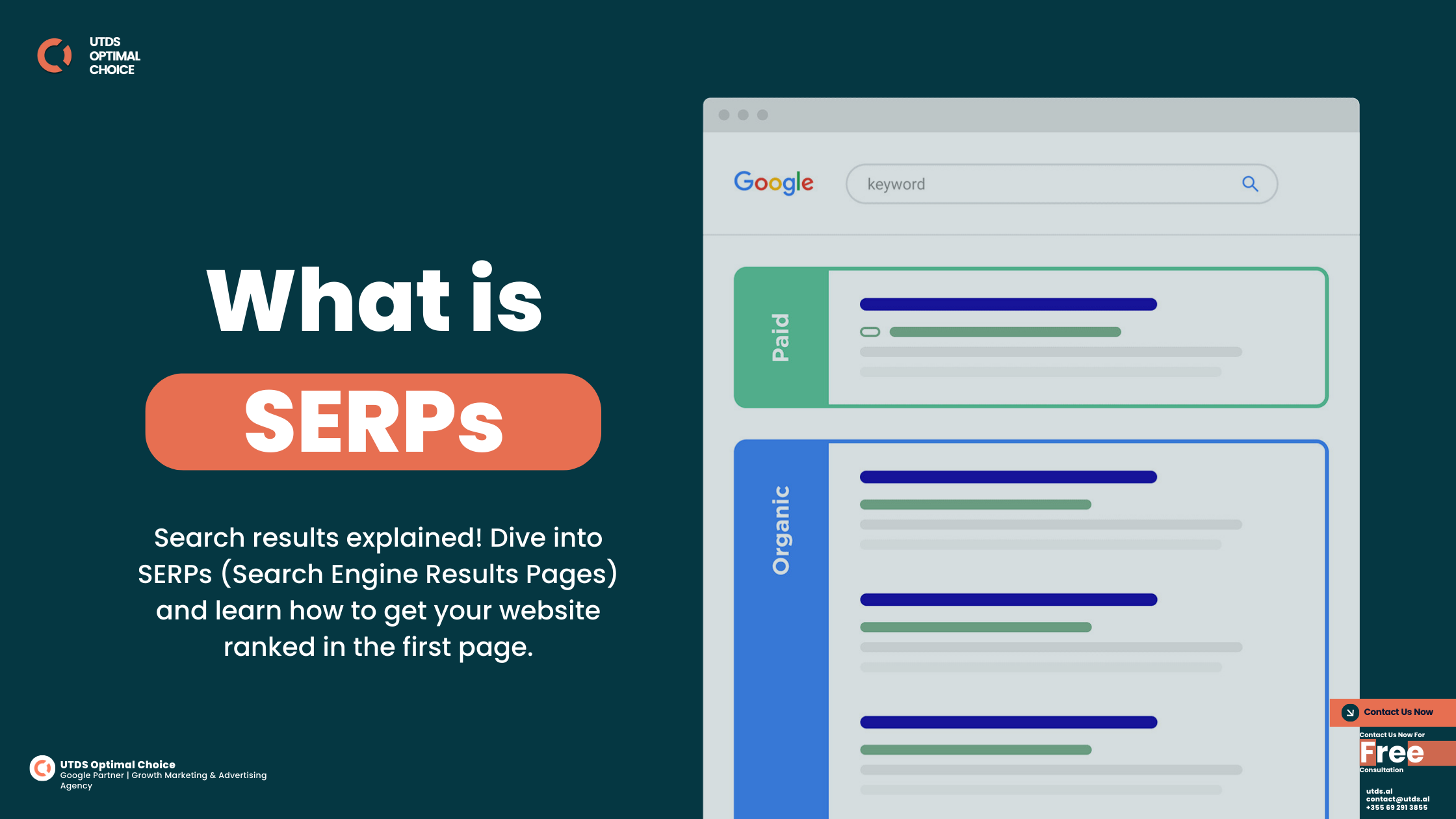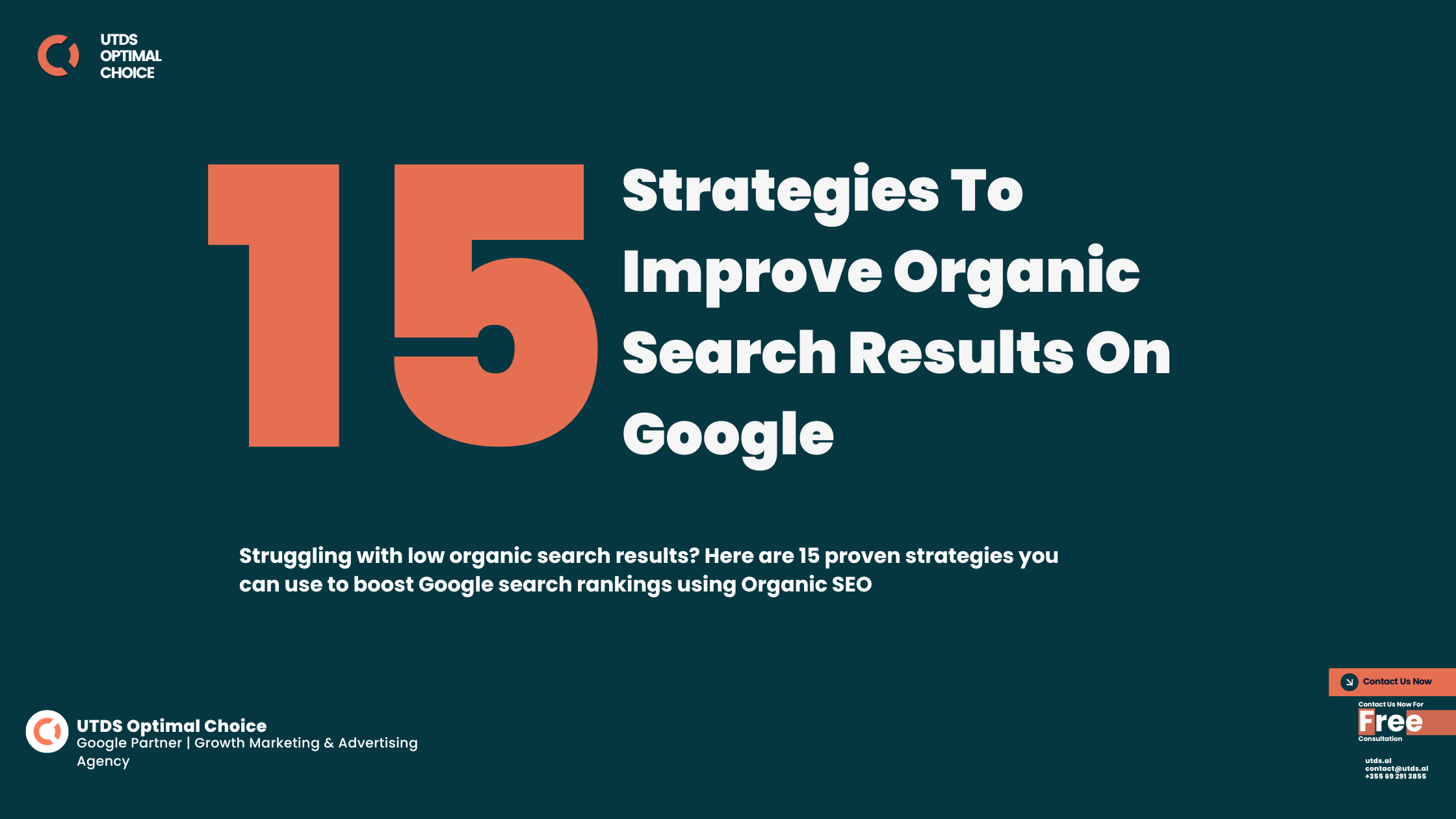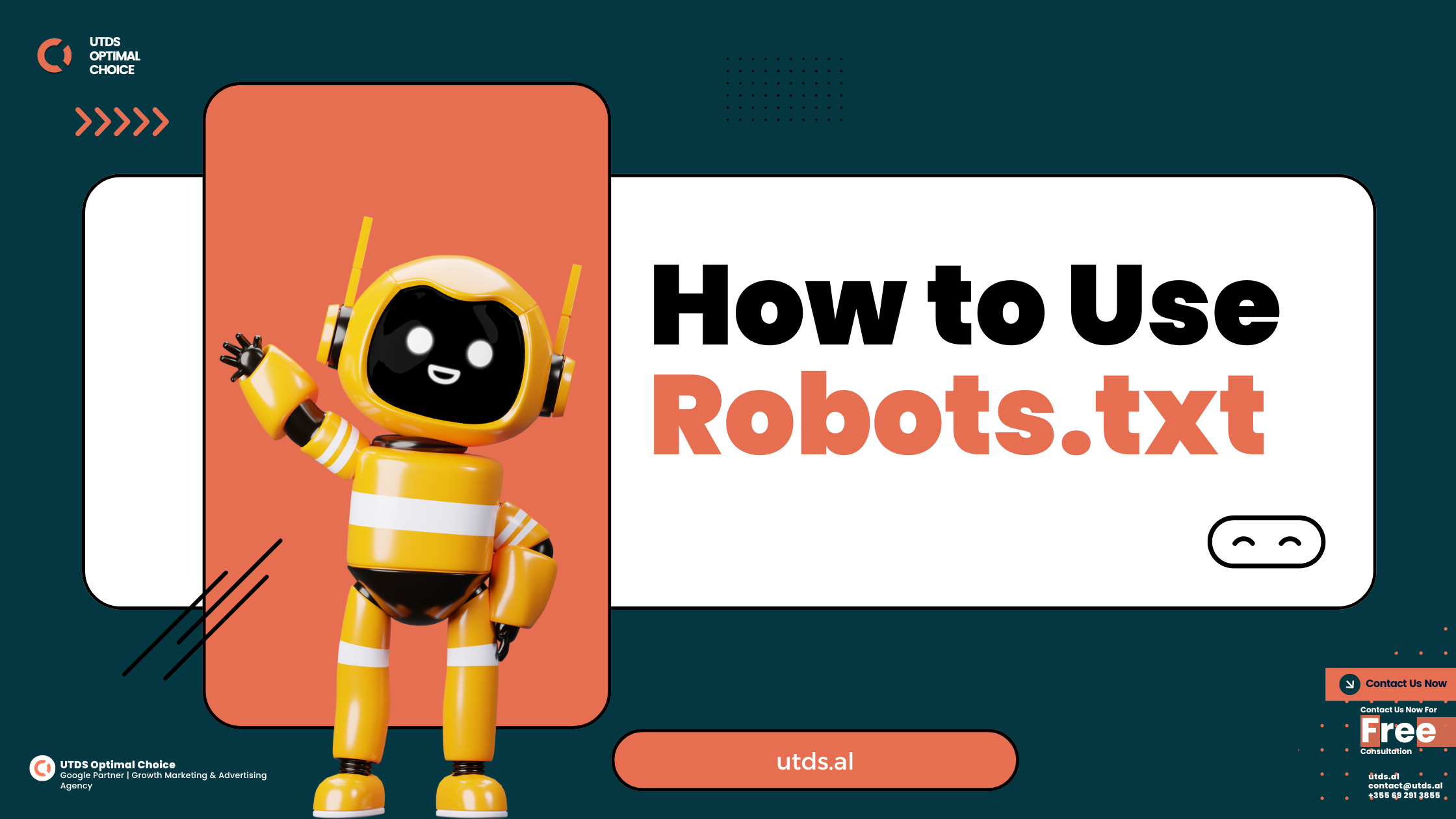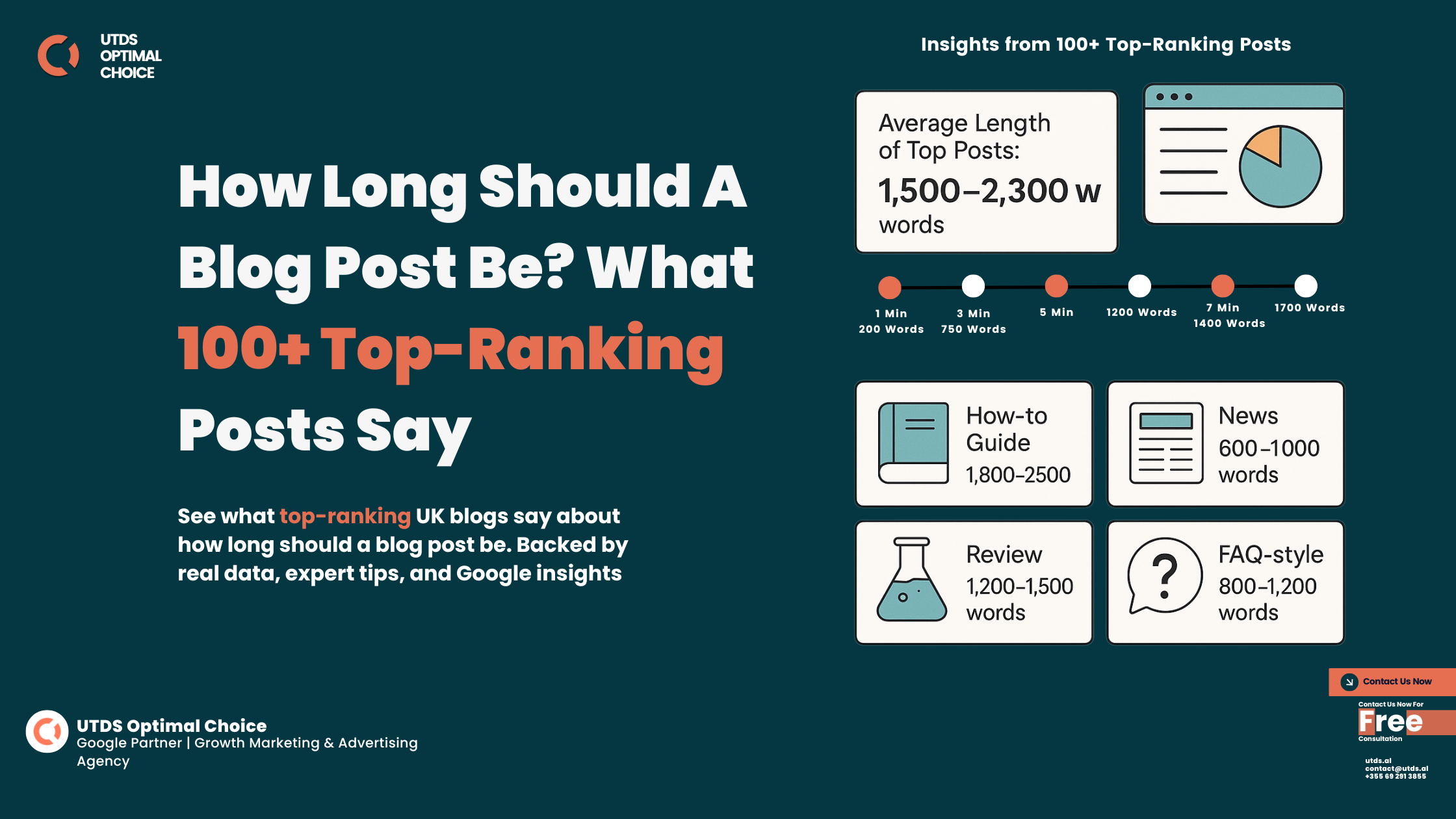So, What Is an SEO Content Marketing Strategy? An SEO content marketing strategy is a step-by-step plan to help businesses create and optimise content that ranks well on search engines like Google. The goal is to attract organic traffic by matching the content with user search intent and relevant keywords. Whether you’re a small business or a large B2B company, having a strategy ensures your content is found by the right people, which ultimately drives conversions.
Ready to improve your content marketing strategy and drive real traffic to your website? At UTDS Optimal Choice, we specialise in creating SEO driven content strategies that rank high on Google and convert visitors into customers. As one of the best SEO and PPC agencies, we can help you craft a winning plan tailored to your business needs. Contact us today to start growing your online presence!
How Can I Create An Effective SEO Content Marketing Strategy?
Step 1: Define Your Target Audience
Before creating any content, you must define who your target audience is. This involves understanding their demographics, interests, and search behaviour. Are you targeting professionals in B2B industries or individual consumers in B2C markets? For example, if your business operates in the UK, you might cater to local SEO queries like “B2B content marketing strategies UK” or “small business SEO content marketing.”
By using tools like Semrush, you can gather valuable data on your audience’s preferences and needs. The better you know your audience, the easier it becomes to tailor your SEO content marketing strategy.
Step 2: Perform In-Depth Keyword Research
Keyword research is the foundation of your SEO content marketing strategy. Focus on finding high-traffic, low-competition keywords to help your content rank higher. Tools like Google Keyword Planner or SEMrush are great for identifying both short-tail and long-tail keywords. Start with primary keywords like SEO Content Marketing Strategy, and dig deeper into secondary and long-tail variations, such as:
- Content Marketing Strategy Template
- SEO content marketing examples
- How to create a content marketing strategy
- B2B content marketing strategy for UK businesses
These long-tail keywords attract a more specific audience and often have less competition, making it easier to rank. Including these in subheadings and throughout the content will help capture diverse user queries. This is just an example of how we used these keywords in this content.
Step 3: Structure Content for Different User Intents (TOFU, MOFU, BOFU)
An effective content marketing strategy must cater to different stages of the buyer journey. To address multiple user intents (informational, navigational, and transactional), your content should be split across three funnel stages:
- TOFU (Top of the Funnel): At this stage, your audience is just discovering your brand and seeks informational content. Create articles or guides like “What is an SEO Content Marketing Strategy?” or “Content Marketing Strategy Template” to attract users searching for basic information.
- MOFU (Middle of the Funnel): Here, users are more interested in solutions and comparisons. Offer in-depth guides or case studies, such as “B2B Content Marketing Strategy Example for UK Businesses,” to show them how your strategies can meet their specific needs.
- BOFU (Bottom of the Funnel): This stage focuses on transactional content, designed to convert leads into customers. Offer tools or templates, for example, “Download Our Free SEO Content Marketing Strategy Template” or “How Our Agency Can Help You Build a Winning Content Strategy.” Make sure to include CTAs at this stage to drive conversions.
Step 4: Optimise for Featured Snippets and Rich Results
To capture Google’s featured snippets or rich results, structure your content to provide concise, direct answers to common questions. Here’s how you can do it:
- Lists and Bullet Points: Use these for step-by-step processes like “How to Create a Content Marketing Strategy in 5 Steps.”
- Tables: Compare data or strategies to make it visually appealing and easy to digest.
For example, a snippet-friendly section might be:
How to Create a Content Marketing Strategy in 5 Steps
- Define your target audience.
- Perform keyword research.
- Create and optimise content.
- Promote your content across platforms.
- Monitor and adjust your strategy.
By formatting the content this way, you’re increasing the likelihood of ranking in featured snippets, which often drives significant traffic.
Step 5: Incorporate EEAT for Credibility
To rank high on Google, it’s essential to demonstrate Expertise, Authoritativeness, and Trustworthiness (EEAT). You can do this by:
- Citing credible sources, such as industry reports or case studies.
- Linking to trustworthy external content or studies.
- Sharing real-life examples or personal success stories to build trust with your readers.
For example, include a section like this:
“According to a recent HubSpot study, businesses that integrate SEO into their content marketing strategies see a 13% increase in organic traffic within the first six months. Additionally, using templates for content creation can boost productivity by 30%.”
This shows your readers (and Google) that your content is based on reliable data.
Step 6: Enhance Internal Linking for Better Engagement
Adding internal links improves site structure and keeps users engaged. Link to other relevant pages on your website, like:
- SEO Services
- Content Creation for SEO
- B2B Marketing Strategies
This not only keeps users on your site longer but also signals to Google that your website is a comprehensive resource.
Step 7: Optimise Meta Titles, Descriptions, and URLs
Crafting effective meta titles and descriptions can increase your click-through rates (CTR). Optimise them by including your primary keywords and adding an action-driven element.
For example:
- Meta Title: SEO Content Marketing Strategy: Boost Traffic with Our Expert Guide
- Meta Description: Learn how to create an SEO content marketing strategy that drives traffic and increases conversions. Get actionable tips and a free strategy template. Check here to know more about SEO Meta Tags.
Ensure your URL structure is short, descriptive, and keyword-optimised. For example: yourwebsite.com/seo-content-marketing-strategy
Step 8: Use Visuals and Multimedia Effectively
Including visuals like infographics, videos, or comparison charts can increase engagement. For example, a content marketing strategy infographic can summarise key steps or data points visually, helping users better understand the process. Ensure all visuals have SEO optimised alt text to make them searchable.
Step 9: Mobile Optimisation and Core Web Vitals
Google prioritises mobile friendly websites, so ensure your content is easy to navigate on any device. Follow Core Web Vitals for better performance:
- Loading Speed: Minimise image sizes and use lazy loading to improve page load time.
- Interactivity: Ensure buttons and CTAs are easily clickable on mobile.
- Visual Stability: Make sure your page layout doesn’t shift as content loads.
Step 10: Content Freshness and Trends
Keep your content fresh by updating it regularly and adding insights into current industry trends. For example, discuss Google’s RankBrain algorithm or how AI-powered content tools are changing SEO.
Adding a section like “Latest SEO Trends for Content Marketing” can attract traffic from users looking for up-to-date insights.
Looking To Create SEO Content Marketing Strategy?
Creating an effective SEO content marketing strategy requires careful planning and execution. By targeting the right keywords, catering to various user intents, and optimising your content for search engines and users, you can significantly boost your website traffic.
Ready to take your content strategy to the next level? We are UTDS Optimal Choice, we are one of the most renowned SEO agencies with clients all around the UK and Spain. Contact us today to get started with expert help from the UK’s leading SEO professionals.
FAQ: Common Questions About SEO Content Marketing Strategy
- What makes an SEO content marketing strategy successful?
A successful SEO content marketing strategy focuses on creating valuable content that aligns with user search intent and uses relevant keywords to attract traffic. - How long does it take to see results from SEO content marketing?
Results typically take 3 to 6 months, depending on the competitiveness of your keywords and how well your content is optimised.










